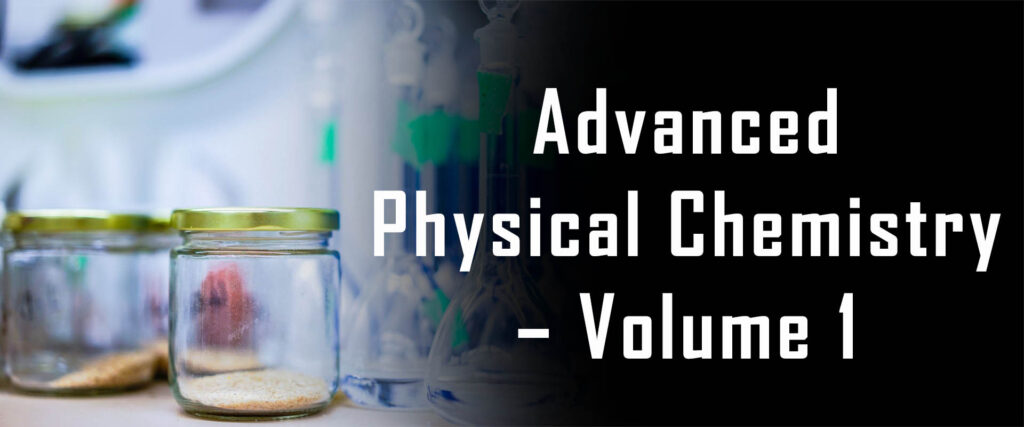
Contents:
- CHAPTER 1: Mathematics for Chemists
- Importance of Mathematics in Chemistry
- Numbers: Fundamental Ideas
- Variables: Algebra of Real and Complex Numbers
- Units: Concept and Conversion
- Algebraic Equations
- Geometry
- Mensuration
- Algebraic Functions
- Trigonometric Relations and Functions
- Exponential Function
- Logarithmic Functions and Relations
- Hyperbolic Functions
- Functions of Several Variables
- Limit and Continuity
- Differentiation
- Integration
- Differential Equations
- Sequences and Series
- Vectors
- Matrices and Determinants
- Data Analysis
- Probability
- Permutation and Combination
- CHAPTER 2: Old Quantum Theory: The Genesis
- CHAPTER 3: Modern Quantum Theory: Concepts and Application to Simple Systems
- Properties of Particles and Waves
- Dual Nature of Light
- Dual Nature of Matter
- de-Broglie Relation and Bohr Angular Momentum
- Heisenberg Uncertainty Principle
- Postulates of Quantum Mechanics
- Acceptable and Non-Acceptable Functions
- Operator Algebra
- Important Quantum Mechanical Operators
- Operator Evaluation and Resultant Operator
- Commutation Relation Between Different Operators
- Significance of Operator Commutation and Uncertainty Principle
- Hermitian Operators
- Max-Born Interpretation of a Wave Function
- Normalized and Orthogonal Wavefunctions
- Particle in a One-Dimensional Box
- Particle in a Two-Dimensional Box
- Particle in a Three-Dimensional Box
- Hydrogen Atom – Wave Mechanical Model
- Simple Harmonic Oscillator
- Two-Dimensional Harmonic Oscillator
- Three-Dimensional Harmonic Oscillator
- Diatomic Rigid Rotator
- CHAPTER 4: Quantum Mechanical Treatment of Complex Systems
- Approximation Methods for Complex Quantum Mechanical Systems
- Variation Method in Quantum Mechanics
- Perturbation Theory in Quantum Mechanics
- Antisymmetric Wave Functions and Pauli Exclusion Principle
- Aufbau Principle
- Wavefunctions of Many-Electron Atoms: Slater Determinants
- Slater’s Rules
- Angular Momentum of Multi-Electron Atoms
- Electronic States of Atoms: Term Symbols
- Hund’s Rules
- Quantum Mechanical Tunneling
- CHAPTER 5: Chemical Bonding: Molecular Quantum Mechanics
- Lewis Theory of Chemical Bonding
- Born-Oppenheimer Approximation
- Heitler-London’s Valence Bond Theory for Diatomic Molecules & Its Application to H2 & H2+
- Heitler-London-Slater’s Valence Bond Theory for Diatomic Molecules
- Heitler-London-Slater-Pauling’s Valence Bond Theory for Polyatomic Molecules
- Structural Hybridization: Application of Valence Bond Theory to Delocalized Chemical Bond
- Orbital Hybridization: Application of Valence Bond Theory to Shape of Molecules
- Molecular Orbital Theory for Diatomic Molecules & Its Application to H2 & H2+
- Molecular Orbital Diagram of Homonuclear Diatomic Molecules: O2, F2, Ne2, N2, He2+
- Molecular Term Symbols for Homonuclear Diatomic Molecules
- Molecular Orbital Diagram of Heteronuclear Diatomic Molecules: CO, NO
- Huckel Molecular Orbital Theory of Conjugated π-Systems
- CHAPTER 6. Group Theory and Molecular Symmetry: Spectral and Chemical Applications
- Definition and Significance of Symmetry
- Polygons and Polyhedral Geometries
- Symmetry Elements and Symmetry Operations
- Axis of Rotation or Symmetry Axis (Cn)
- Plane of Symmetry or Symmetry Plane (σ)
- Center of Symmetry or Inversion Center (i)
- Improper Axis of Rotation or Alternating Axis of Symmetry (Sn)
- Molecular Point Groups
- Matrix Representations of Geometrical Operations
- Molecular Point Groups as Mathematical Groups
- Group Multiplication Tables: C2v and C3v
- Similarity Transformation and Symmetry Classes
- Reducible and Irreducible Representations: Matrix Forms of Symmetry Operation of Molecular Point Groups
- The Great Orthogonality Theorem: Properties of Irreducible Representations
- Character Tables: Definition and Their Construction
- Nomenclature of Irreducible Representations: Mulliken Symbols
- Mulliken Symmetry of Translational Vectors and Their Significance
- Mulliken Symmetry of Rotational Vectors and Their Significance
- Mulliken Symmetry of Cartesian Tensors and Their Significance
- Reduction Formula: Resolution of a Reducible Representation into its Irreducible Components
- Mulliken Symmetry of Total Degree of Freedom
- Mulliken Symmetry of Vibrational Degree of Freedom: IR and Raman Activity
- Valence Bond Treatment of σ-Bonding in Polyatomic Molecules Using Point Group Symmetry
- Valence Bond Treatment of π-Bonding in Polyatomic Molecules Using Point Group Symmetry
- Molecular Orbital Treatment of σ-Bonding in Polyatomic Molecules Using Point Group Symmetry
- Molecular Orbital Treatment of π-Bonding in Polyatomic Molecules Using Point Group Symmetry
- Determination of the Spectral Transition Probability Using Molecular Symmetry
- List of Character Tables of Some Important Point Groups
- CHAPTER 7: Solid State
- Definition and Classification of Solids
- Crystallography: Definition and Important Terminology
- Symmetry Elements and Symmetry Operations in Crystallographic Systems
- Crystallographic Axis and Axial Ratio
- Laws of Crystallography
- Crystallographic Point Groups, Crystal Systems, and Crystal Families
- Space Lattice, Unit Cell, and Crystallographic Planes
- Bravais Lattices and Space Groups
- Close Packing in Crystals and Unit Cell Generation
- Calculation of Number of Particles Per Unit Cell in Cubic Systems
- Mass, Volume and Density of Different Types of Unit Cells
- Nearest Neighbouring Distance, Edge Length, and Radius of the Sphere in Cubic Systems
- Radius Ratio Rule: Size of Tetrahedral and Octahedral Voids in Cubic Crystal Systems
- Packing Efficiency or Packing Fraction in Close Packing
- Interplanar Separation and Interplanar Angle
- Isomorphism and Polymorphism
- Lattice Defects in Solids
- Band Theory of Solids
- Crystal Structure of Some Important Solids
- Diffraction of Electromagnetic Radiation
- Diffraction of X-Ray by Crystals
- Bragg’s Law of X-Ray Diffraction
- Powder Method of X-Ray Diffraction
- X-Ray Diffraction Pattern of a Cubic Crystal System




